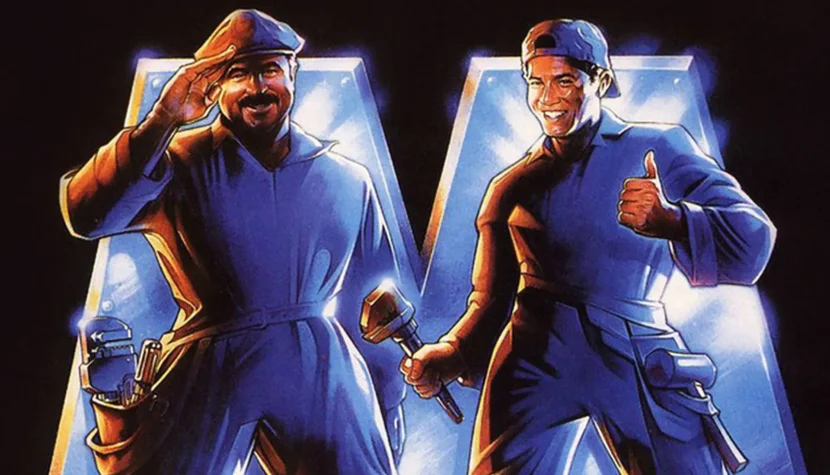SUPER MARIO BROS. An insane trash-punk science fiction underappreciated by audiences

In the early 1990s, the creators of “Super Mario Bros.” had only arcade versions of games about the heroic plumber, whose mission was to rescue a beautiful princess from the clutches of a villain named Bowser Koopa. This villain resembled a dragon, but in fact, was not a dragon at all—rather, a mutated turtle. The storyline in these games was minimal, focusing on arcade-style entertainment: progressing through levels and defeating bosses. Therefore, adapting the game into a film seemed relatively straightforward—or so the various directors, producers, and screenwriters thought. But such assumptions were misleading. Fans had already formed vivid visualizations in their minds, and it’s hard to compete with those, especially when they are rooted entirely in emotion.
The “Super Mario Bros.” movie suffered from production turmoil—rarely does one hear of four directors attempting to complete a single film: Roland Joffé, Dean Semler, Annabel Jankel, and Rocky Morton. The first two names are well-known in the film world, but ultimately, the credits retained the latter two. Did these directorial changes truly impact the film’s quality? Or was the movie doomed by its stylistic choices and its clash with irrational expectations? Expectations from whom—viewers or critics?

The film cost $45 million to make but grossed just under $21 million, making it a box office failure. Yet some flops eventually become cult hits. This, however, was not the case here, which is perhaps unsurprising. The problem lay in reinterpreting the game through a singular stylistic lens. The film did not address the somewhat fairy-tale-like expectations of viewers—neither their sentimental ones, drawn from their experience with Nintendo, nor those of younger audiences at the time, who were not yet equipped to understand the film’s aesthetic. How could young teenagers in the early 1990s grasp that “Super Mario Bros.” was a trash-punk action comedy with fantasy elements? And how could adults, who had never played the game because they were too old for the virtual world, understand it either?
Today, Nintendo fans are accustomed to entirely different science fiction, games, and even interpretations of Mario. Mario is now innocent, unambiguous, and literal—not at all like the character in the 1993 production.
The world of the film—the parallel universe where the main plot unfolds—was designed as a dirty, dystopian underground. It’s populated by grimy people who evolved from reptiles—dinosaurs—while those above live in a visually pristine world. But that cleanliness is an illusion. The two plumbers, mammals living in a wealthy world, are surrounded by so much poverty and violence that the underground antagonist, Koopa, could easily feed off it. The princess connects these two worlds—a devoted, idealistic girl left 20 years earlier on the steps of a monastery by a mysterious woman. And here’s the twist: she arrived in the form of an egg, which hatched into a newborn.

The story cleverly incorporates the concept of a global cataclysm that killed most dinosaurs but also led to two evolutionary lines of humans—reptilian and mammalian. Now, ask yourself: have you ever encountered such an intriguing idea for a game adaptation or sci-fi film? It has been decades since the premiere, and there are still no mainstream films like this trash-punk adventure. Has no one noticed this?
No one appreciated the excellent editing, set design, Dennis Hopper’s acting, his character’s depth, the chemistry between Bob Hoskins and John Leguizamo, the Goombas as perfect quirky characters, the metal and punk references in the costumes, and the music—not just Roxette’s song but Alan Silvestri’s score as well. Dean Semler’s cinematography also leaves an impression, such as the tunnel scene where Daisy’s mother escapes. What, then, is there to criticize? The plot? Based on what? The game, which had no real storyline and was simply an arcade hit with no competition at the time? Or perhaps because of the production issues that allegedly affected the film’s quality—but how exactly? The technical aspects, like editing and budget, were praised, while the content was criticized for not capturing the spirit of the original. But the game was a simple, one-dimensional arcade game. It had no “spirit” to distort, as it was devoid of deeper narrative elements.
The critique seems to stem from urban legends—claims that something was distorted, that “evil Hollywood” ruined yet another thing. Such criticism is based on rumors and impressions. Few have recognized the post-punk atmosphere as the film’s greatest strength, with its meticulously constructed underground world and the fascinating concept of an alternative evolutionary path for humanity. The game was left far behind, as it should have been, because it cannot be adapted into mature cinema for adults. Forcing this material into another fairy tale aimed at generating hundreds of millions of dollars would squander the original vision of Shigeru Miyamoto and Takashi Tezuka.

